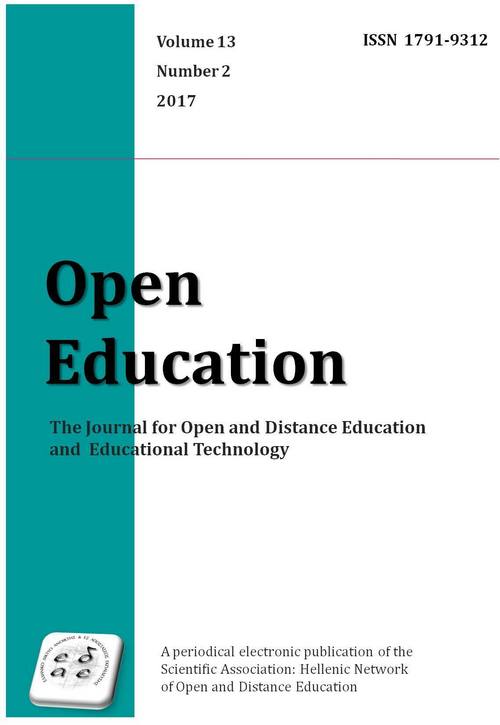New technologies are a tool to strengthen multiple intelligences

Abstract
This work is about Gardner’s Multiple Intelligences and the possibilities provided by the education model known as open and distance learning. Open and distance learning exceeds traditional teaching practice, meeting the needs of those students who have different forms of cognitive understanding and learning style. This tool has in itself the potential to build knowledge collectively. The conclusions make open and distance learning not just a mere tool for education, but a means to reach new levels of comprehension, reflecting on the role of education itself.
Article Details
- How to Cite
-
Πολύδωρος Γ. (2017). New technologies are a tool to strengthen multiple intelligences. Open Education: The Journal for Open and Distance Education and Educational Technology, 13(2), 140–148. https://doi.org/10.12681/jode.14581
- Issue
- Vol. 13 No. 2 (2017)
- Section
- Section 2
Copyright Notice
Authors who publish with this journal agree to the following terms:
Authors retain copyright and grant the journal right of first publication with the work simultaneously licensed under a Creative Commons Attribution Non-Commercial License that allows others to share the work with an acknowledgement of the work's authorship and initial publication in this journal.
Authors are able to enter into separate, additional contractual arrangements for the non-exclusive distribution of the journal's published version of the work (e.g. post it to an institutional repository or publish it in a book), with an acknowledgement of its initial publication in this journal.
Authors are permitted and encouraged to post their work online (preferably in institutional repositories or on their website) prior to and during the submission process, as it can lead to productive exchanges, as well as earlier and greater citation of published work.


